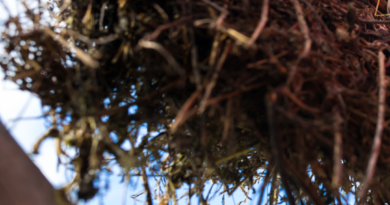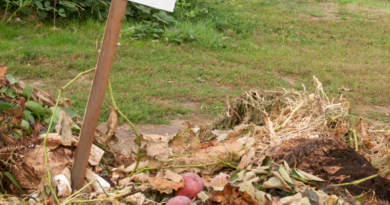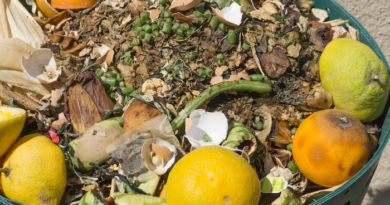The difference between hot composting and cold composting
Hot and cold composting are techniques used outdoors in bins, piles or pits (holes) to break down organic waste in the garden.
Hot composting is the more traditional method, and involves piling organic matter (such as leaves, grass clippings, and kitchen scraps) in a heap and allowing it to decompose. The heat generated by the decomposing material will help speed up the process. Cold composting is a slower process but doesn’t require as much attention or effort. You can add organic matter to a bin or pile; over time, it will break down into compost.
So, what’s the difference between hot and cold composting?
Hot composting is faster than cold composting but requires more regular maintenance. You’ll need to turn the heap regularly to aerate it and help promote decomposition. Cold composting is slower but much easier since you don’t need to turn the pile or do anything else to manage it. Cold composting is the way to go if you’re not in a hurry and want an easy way to make compost.
How Do You Do Hot Composting?
Hot composting is a process that speeds up the decomposition of organic matter by creating conditions that are conducive to bacterial activity. The key to hot composting is maintaining a balance of carbon and nitrogen and ensuring enough oxygen is present.
The ideal carbon (browns) to nitrogen (greens) ratio for hot composting is 3:1. Green materials are high in nitrogen and include things like grass clippings, vegetable scraps, and coffee grounds. Brown materials are high in carbon and have things like dead leaves, twigs, and shredded newspaper.
Once you have balanced your carbon to nitrogen ratio, you must ensure that your compost pile has enough oxygen. You can do this by adding water (making sure it does not get soggy, rather it should feel like a wrung sponge) and regularly turning the pile so fresh air can reach all the material.
If you create the right conditions, hot composting can happen quickly—from as little as three weeks! The result will be a rich, crumbly soil amendment that is perfect for use in the garden.
How Do You Do Cold Composting?
Cold composting is a decomposition process that happens without adding heat. Depending on the size and type of material to be composted, it can take anywhere from several months to a year for materials to break down. Cold composting works well for leaves, grass clippings, and other garden waste. The key to successful cold composting is layering (or “carbonation”), which helps speed up the decomposition process.
Pros and Cons of Hot Composting Vs Cold Composting
Hot composting is the faster of the two methods, taking anywhere from two weeks to two months. The key to hot composting is maintaining a consistent temperature of between 32 and 60 degrees Celsius. You can acheive this by regularly turning the pile and adding fresh green matter. Hot composting is ideal for those who want quick results or live in a hot climate.
On the other hand, cold composting takes much longer – anywhere from four months to a year. The key to cold composting is layering your materials (greens and browns) and not disturbing the pile too much. Cold composting is ideal for those who don’t mind waiting a while for results or live in a climate conducive to this method (such as cooler temperatures).
So, what’s the difference between hot and cold composting? Essentially, it boils down to time and temperature. Hot composting is faster but requires more maintenance, while cold composting takes longer but is less hands-on. Ultimately, it’s up to you to decide which method suits you and your situation.
Conclusion
Hot composting and cold composting are two methods you can use to break down organic matter. Both approaches have advantages and disadvantages, so choosing the suitable method for your needs is essential. Hot composting is faster and produces a higher quality compost, but it requires more effort to maintain the correct temperature. Cold composting is slower and doesn’t produce as high quality of a compost, but it is easier to maintain.




